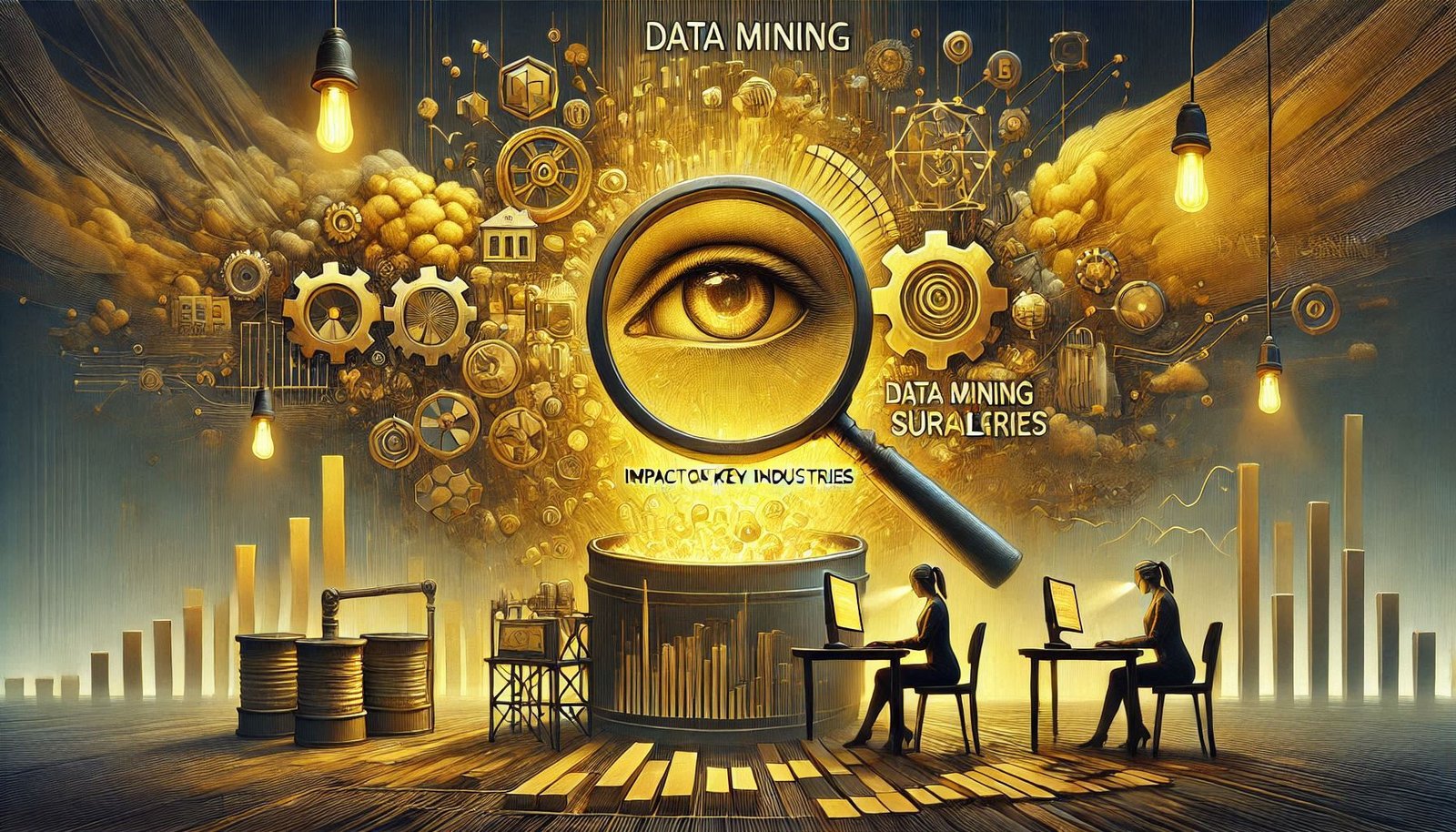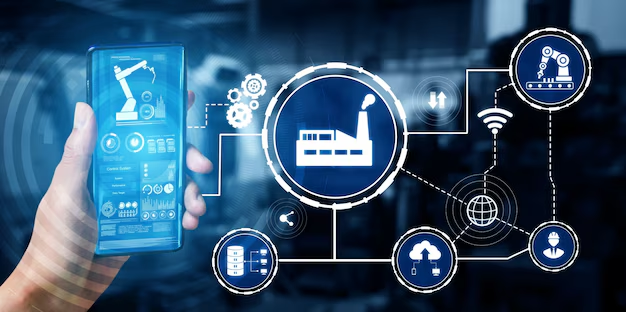Theme: The Dark Side of Data Mining: Reshaping (and Exploiting) Big Data
The Ubiquitous Landscape of Data Mining
In the era of modern business, it is impossible to separate it from data. Think big — enormous datasets, commonly recognized as ‘Big Data’ have become the bedrock of organizational decision-making, informing everything from personalized marketing campaigns to sophisticated risk models. The technology enabling this shift is data mining, the art and science of extracting patterns, trends, and insights from these enormous data stores. Such a powerful analytical perspective can give organizations a competitive advantage, streamline operations, and provide personalized customer experiences. But alongside data mining’s enormous capabilities is a darker, less understood — and potentially vexing — side.
The Sword That Cuts Both Ways With Data Insights
Data mining creates great opportunities for progress and innovation but the power of data mining can also be abused for malicious purposes. The same mechanisms that can drive positive changes — sophisticated algorithms, automated pattern recognition, and predictive analytics — can also be used for manipulative, discriminatory or unethical ends. This blog explains these lesser-discussed elements, detailing how the inherent biases of data mining, its chances of violation of privacy and its fragility against misuse will be reshaping the face of Big Data. Based on your experience is my trip about a different signal of data mining professionals and business masters to enable your experience, manipulating the ethical intricacies of this dynamic technology.

Key Areas of Exploration
This discussion will analyze:
Algorithmic Bias — speaks to the unintended biases that can seep into data and then get amplified during data mining processes, which can lead to biased or discriminatory results (O’Neil, 2016)
- Privacy: The potential for reduced privacy for individuals due to the widespread collection and analysis of personal data, along with issues like anonymization and data breaches.
- Otherwise known as the exploitation of behavioral patterns in a native advertising sense.
- Ethics And Regulation: Discussing the necessity for proactively framed ethical interventions, as well as assuring the compliance of regulations in order to allow for responsible data mining activity.
- This particular blog looks to raise awareness of some of the more critical issues surrounding data mining, and to promote positive engagement with a technology that has the potential to impact our societies in many positive, but also negative ways. (Zuboff, 2019).
– Mining the Data Mining Ecosystem: The Data Mining Market Key Signals & their Impact & Recommendations
Market Research Analysis из Data Mining Market 2026
The data mining market is ever-evolving, providing tools and techniques to achieve cost synergy by extracting useful information from the volume data set. This analysis will be break down these trends, their impact, and action-driven insights for market-minded strategists in the space.
Positive Trends
Democtratization of Data Mining Tools: There is major push towards easy-to-use low-code/no-code platforms. Once you start looking into these tools, it becomes apparent that you are simplifying complex algorithms, making data mining easier and available to many more people than those working with specialized data scientists.
The complexity of data is increasing, and now business will need a bit of help to see a trend in data to optimize the process.
- Implications: Decreased reliance on designated personnel, expedited insight production, and broadening consumption from SMEs. Absence of Generalised Tools: Tools and platforms such as Tableau and Alteryx are well- known to business users for data analysis.
- What You Can Do: Invest in user training and low-code platforms that allow employees across departments to extract insights and/or build new applications to drive a data-driven culture.
- Trend 7: Cloud Based Data Mining – Cloud-based data mining is becoming quite popular, as a data mining technique. In the meantime, cloud environments can provide scalable resources while eliminating the need for on-premise, and typically costly, infrastructure.
Enabler: Cost-effective, agile, and capable of processing big data can all be drawn from cloud computing “You could share data you wouldn’t be able to do otherwise.
- Impact: It is reducing the infrastructure cost, enables accessibility to advanced algorithms, faster deployment of data mining models. For instance, Google Cloud AI Platform and Amazon SageMaker are strong cloud-based data mining platforms.
- Takeaway: Use the cloud as both a data storage and a data mining facility målstyret with an eye to cost-optimization and scale.
Emphasis on XAI (Explainable AI): Clearly, there is an increasing demand for transparency and interpretability of AI and data mining models. Explainable artificial intelligence (XAI) helps solve the black box problem by making it understandable how model decisions were made.
- Catalyst: Greater regulation and ethical considerations, as well as a need to create user trust in AI-generated results.
- Benefits: More user confidence, improved model validation, easier bias detection and higher compliance. For example : LIME and SHAP are XAI methods which are used to explain complex models.
XAI tools and techniques should be the highest priority while developing data mining solutions in sensitive domains like finance and healthcare.
Adverse Trends
Data Privacy and Security Needs: Customers are increasingly concerned about the security and privacy of their data, and regulations such as the General Data Protection Regulation (GDPR) and California Consumer Privacy Act (CCPA) make it more challenging. With these regulations in place, companies still need to rely on data for insights.
- Root Cause: Rising concern over data breaches, misuse of personal data, and consumer demand for data privacy
- Consequences: Higher regulatory compliance costs, reputational damage from data breaches, and potential restrictions on specific data usage. For Example : Companies that have been fined and publicly shamed for violated GDPR
- Actionable Insight: Pipe in strong data security infrastructure and adopt privacy-enhancing technologies (anonymization, differential privacy, etc.). Abstract: Design a holistic data governance framework кому law.
The Enhancements in Big Data but also the Challenges that Come with It Data Quality Problems: The large volume of data from multiple sources tends to result in discrepancy, incompleteness, and inaccuracy. Models for data mining become inaccurate due to the poor quality of data.
- Reason: Expanding data, disconnected data sources and non standardized data collection.
- Effect: Misleading insights, biased predictions and possibly damaging the making of decisions. In the example given above: A biased machine learning model, would reflect the inequalities within the training data.
Data quality issues can arise from inconsistent data entry, integration errors, or lack of validation processes, leading to inaccurate decision-making. Establish data governance policies to ensure that its data is accurate and consistent.
Advanced Analytics Talent Gap: As low-code platforms ease data mining, the gap in advanced analytics talent has widened, particularly in machine learning and deep learning fields.
- Reason: Data mining can make use of multiple algorithms, and new ones are continuously being developed. This fact combined with the field it self is evolving faster than the growth of practitioners.
- Lack of ability to leverage advanced analytics as a competitive advantage; possible delays in the project.
- Actionable Insight: Collaborate with academic institutions to cultivate talent, present competitive compensation packages and invest in upskilling current employees.
Conclusion
In this method, You have create opportunities and difficulties. “Armed with an understanding of these key trends, businesses can make strategic investments in user-friendly platforms, cloud infrastructure, and explainable AI, and mitigate risk from data privacy concerns, data quality issues, and talent gaps. The real miracle is to plan ahead for the change and make data driven strategy a business as usual process.
Real-Life Applications of Data Mining in Business
- Industry: Extracting data is vital for health patient care improvement and operation mess management. It is used by hospitals to predict readmission rates for patients by analyzing historical data, such as medical history, demographics, and treatment data. Depending on their risk class, high-risk patients can be responded to using proactive medications, improved discharge preparation, or follow-up visits to decrease costs and outcomes. Also in the context of pharmaceuticals, pharmaceutical companies use data mining to expedite the drug discovery process, analyzing genetic information in order to identify potential drug targets, and using clinical trial data to forecast drug effectiveness. This accelerates the process of developing the drugs and lowers the risk of failed clinical trials.
- Technology: Data mining is the backbone of personalization and product enhancement for tech firms. Association rule mining is used by e-commerce platforms to determine items that are often bought together, allowing them to provide personalized suggestions for consumers. All of this enhances the customer experience and boosts sales. Social media companies also take advantage of sentiment analysis, a data mining technique used to determine if people have a positive or negative opinion of a product, brand, or good: a well-known application in this regard. It can also help in running targeted advertising campaigns and adding features in a product. Pattern analysis is used by companies to detect anomalies in their network traffic, allowing them to quickly identify potential security threats such as malware attacks that may compromise sensitive user data.
- Automotive: In the automotive industry, data mining is used to improve vehicle maintenance and product improvement. Car sensors generate data that manufacturers assess to project when parts may fail, enabling original equipment manufacturers to schedule maintenance in advance for optimal vehicle efficiency and reduced risk of breakdown. This not only is saving the company money but also time because technicians will “provide service around specific maintenance” and improve the experience of the car owners because it will reduce the impact of inconvenient repairs. Also, they analyze data on how cars have been driven to better design vehicles based on actual usage patterns. For example, engineers can pinpoint where cars tend to fail, which can help determine the types of materials and design decisions incorporated into future models.
- Here are the few industries where Data Mining is used: Manufacturing: In manufacturing, manufacturers use data mining for production process optimization and quality improvement. The power of predictive analytics lies in the use of machine learning (ML) to interpret the sensor data generated by machines, allowing businesses to identify impending equipment failures before they manifest, thereby minimizing downtime and maintenance expense. This predictive maintenance provides for the efficient functioning of the production line while avoiding an expensive repair. Additionally, through analysing root causes behind defecting goods in production lines, they are able to optimize each step, decrease of defective goods, and improve overall goods quality.
Key Strategies in the Data Mining Space (2023 Onwards)
Organic Strategies:
- Emphasis on Explainable Artificial Intelligence (XAI): Organizations are focusing on creating data mining tools, which provide more interpretable and transparent outcomes. Instead of just predictive scores, they try to explain why predictions were made. This establishes user trust, leading to improved conformity to regulatory guidelines. Instead, a fraud detection company might now include visualizations of precisely which factors prompted it to raise the alarm.”
- Improved Automation & MLOps The drives towards automation of the data mining pipeline stages right from: – Data preparation – Application of algorithm and training - Model evaluation – Model deployment Investing in MLOps: This means investing in MLOps platforms that facilitate easy development, testing, and monitoring of data mining models. For instance, a company developing marketing analytics solutions, has now included self-service tools that allow crafting of customer segmentation models, which involves little to no coding skills on the end-user’s part.
- Real-Time Data Processing & Analytics: Additionally, an increasing number of organizations are concentrating on delivering data mining solutions, capable of processing and analyzing data in real-time or near-real-time. However, this lies underneath the growing need for real-time analysis of streaming data origins such as IoT devices or social media stream. A supply chain management company, for example, is now able to aggregate and monitor real time sensor readings and trigger immediate actions to be taken if an anomaly in warehouse temperatures is detected.
Inorganic Strategies:
- Strategic Acquisitions of Niche Technology Providers: Companies are acquiring smaller business with specialized expertise in data mining to quickly expand their product range or enter new markets. An example so far would be if a big cloud vendor were to buy a company with graph database technology in order to improve data mining over connected data.
- Enhancing the Offering: Collaboration with other technological companies, research institutions, or industry-specific data providers is an emerging trend. Followings these partnerships can also enable to access unique data sources, or augment existing platforms with technology know-how. For instance, a healthcare data mining firm could partner with a genetics research institute to enhance its models for predicting disease.
- Funding the Open Source Movement: Organizations are funding and collaborating on open-source data mining projects. This encourages innovation and brings in talent, as well as lowers development costs. For example, a financial services firm could actively maintain a widely used data visualization framework, allowing it to develop exclusive charts that are free to all.

Outlook & Summary: Navigating the Evolving Landscape of Data Mining
The Future: 5-10 Years Out
Data mining will be increasingly advanced over the next decade, thanks to developments in artificial intelligence and machine learning. We can anticipate:
- More Advanced Automation: With circleReduction of manual work — more Automated procedures for mining processes. Along with better techniques for feature selection and model development.
- Ethical & Regulatory Scrutiny: Growing emphasis on ethical considerations in data mining, such as bias detection and mitigation. Regulations governing data used and privacy are likely to tighten even more, affecting how data is mined and applied.
- Real-Time Insights: Moving towards data mining and analysis to help businesses make faster, more adaptive decisions. This will require resilient and scalable data infrastructure.
- Tool Democratization: The development of user-friendly data mining platforms & tools that allow more organizational users — not just specialized analysts — to take advantage of its power.
Integration with Emerging Technologies: An increased integration of data mining with emerging technologies such as edge computing and the Internet of Things (IoT), creating further opportunities for data collection and analysis.
The First Word: Key Takeaways: The Double-Edged Sword
This article highlights a key insight: That data mining is not just a tech-centric, esoteric methodology; it is an omnipresent force that endows meaning and process to the entire big data ecosystem. While it can extract notable insights from enormous datasets, this capability also presents a risk of misuse and exploitation. The essential takeaway is that data mining has unprecedented capabilities to empower businesses but equally serious ethical considerations and risks that come with it. It is critical to have effective governance; ethical frameworks and a thorough understanding of these potential downsides to allow responsible usage. Data mining plays an important role in the big data ecosystem, and controlling how we manage it will greatly affect the effectiveness and social acceptance of this sector as a whole.
With this challenge, complex world of data mining, and societal impact in mind – what approaches for proactively mitigating the ethical consequences and improving the efficacy of big data will your organization be working on come October 2023?





